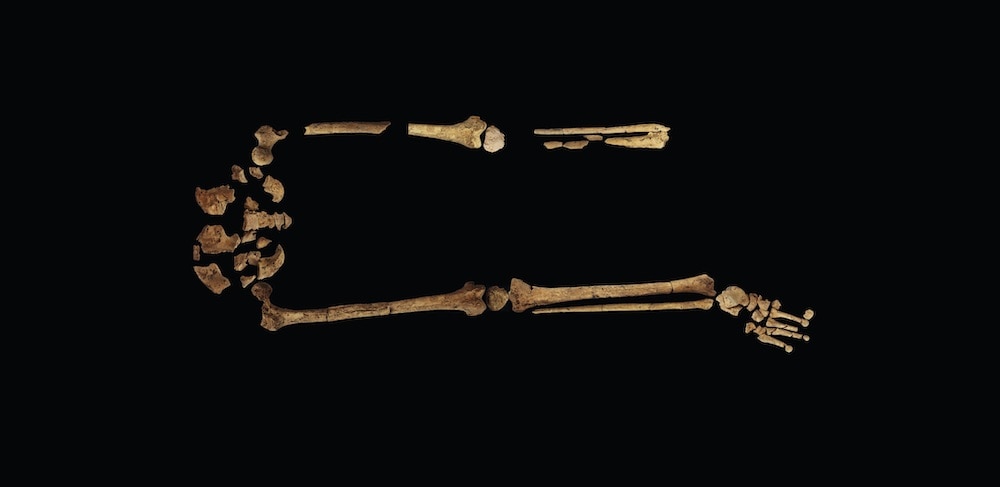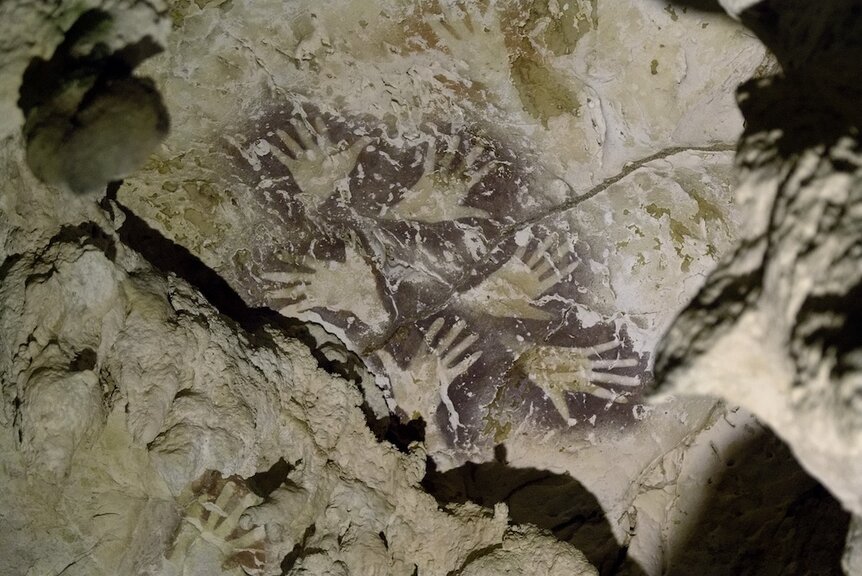Create a free profile to get unlimited access to exclusive videos, sweepstakes, and more!
The oldest successful limb amputation occurred 31,000 years ago
You can't spell legacy without leg.

When Saw first hit theaters (watch the franchise now on Peacock!), it captured the imagination of moviegoers with its slow revelation and final act twist. The simple terror of having your survival in your hands, all at the cost of an amputated limb, provided a special kind of horror. It’s a type of fear which is largely removed from modern society. While amputations occur, they largely happen in hospital settings with the benefit of skilled surgeons and anesthetic.
In humanity’s past, however, the process might have resembled something a little closer to Saw, with an individual or small group of individuals making the conscious — in every sense of the word — decision to remove a limb. A recent discovery inside caves on what is now the Indonesian island of Borneo has revealed the presence of the oldest known surgical amputation, and it’s not even close. Melandri Vlok from the Sydney South East Asian Centre at the University of Sydney, and colleagues, investigated the remains of a child who lived in the region some 31,000 years ago and was, as far as we know, the oldest successful leg amputation. The results of the study were published in the journal Nature.
“Most evidence of surgery comes from agricultural societies. Once humans start to stay in one place all year round, we expect to see a boon in medicine and surgery. Before the case we found, the earliest evidence of amputation is from 7,000 years ago. This is really kind of rewriting our understanding of what it requires for us to adapt to community-based care and advanced surgical care,” Vlok told SYFY WIRE.
This new discovery changes the narrative, making it clear that surgeons were also a part of mobile hunter-gatherer communities. Researchers had recently visited these same cave systems and discovered rock art in the form of hand stencil paintings, which dated back to roughly 40,000 years ago. Later, they decided to revisit the caves and excavate farther inside, in hopes of finding some cultural materials left behind. They didn’t know they were about to find much more than that.
Inside the cave, buried beneath the sediment, they found the remains of a person who had died at roughly the age of 19 or 20. Of even more interest was the missing leg. Finding skeletons, either human or animal, with missing bones isn’t uncommon. But this individual showed signs that the leg was intentionally removed during life, had healed, and the individual survived for somewhere between 6 and 9 years.
“One of the things we look at is bone healing. What’s really obvious with this individual is after the surgery it healed over. It completely recovers. The bone went through all of the stages of fracture or amputation recovery we see today. There’s also evidence they were using it as a stump, applying pressure on the end. Because there wasn’t enough oxygen delivered to the bone because of pressure on the vessels, that actually caused some of the bone to resorb and die off,” Vlok said.
There were also signs of bone atrophy. Compared to a healthy bone, this individual’s leg was thin and lacked some of the usual structure, as a consequence of nonuse. Vlok noted that the body isn’t going to shuffle off resources for something it’s not getting any benefit from. In the game of life, if you don’t use it, you lose it.
Despite the lack of modern medical knowledge, sterile fields, and surgical implements, the amputation offers a window into a society which had an impressive knowledge of medicine. Successfully treating and healing that sort of injury would have required a bit of luck and a lot of support from the community. Peering 31,000 years into the past makes the precise details of the treatment plan murky, but scientists have some ideas.
“We know minimally what would have needed to happen in order for the individual to survive. It’s very easy to bleed out from an amputation of the limb. We also know it’s necessary to treat shock. You can imagine a child who has just gone through some event which required amputation, along with the surgery itself, that’s likely to cause significant physical, emotional, and mental trauma. Also, the tropical environment is next level when it comes to chances of infection,” Vlok said.
Preventing infection requires the ability to neatly close the wound and keep contaminants out. It's also likely the surgeons or whomever handled aftercare, would have needed some antiseptic treatment, probably from local plants. Given the significant time between then and now, scientists aren’t certain which plants would have been available for use, but we know tropical jungles are filled with flora carrying all kinds of medicinal properties.
On top of being the oldest known surgical amputation, this site also offers the oldest known deliberate burial in southeast Asia. Analysis of the site shows evidence of a deliberate hole being dug. The orientation of the body, curled in the fetal position is also indicative of a burial. The most striking evidence, however, is the presence of pigments in association with the body.
“They had a cluster of red ochre right by the side of the mouth. This culture created rock art with red ochre. They would blow it from the mouth to make hand stencils against the rock. Most likely, this particular individual was creating rock art, they were a part of the community, and they were looked after in death as they were looked after in life,” Vlok said.
While the finding has illuminated a previously shrouded part of the human story, it has left researchers with plenty of questions. They hope to discover what tools might have been used to successfully amputate a limb. Without access to metal tools, it’s likely their surgical implements were made of stone. Future research will involve crafting ancient stone tools and testing them on animal bones to see if they can match the marks found on this individual’s residual bones.
Whatever they find, it’s a welcome reminder that our species persists, flourishes, and leaves lasting marks on the world, like so many handprints on a cave wall, only through the support and cooperation of communities.



























